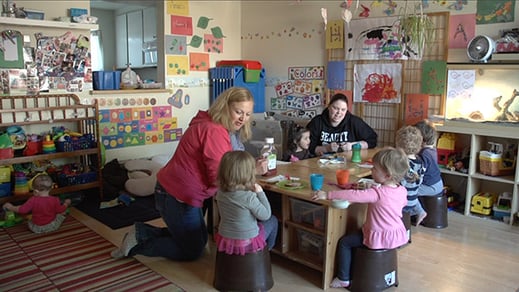
In last month’s blog post in our family child care (FCC) series, we looked at the challenge of maintaining objectivity. This month’s we'll look at another challenge CLASS observers face while using the measure in a family child care setting: coding when there are multiple adults.
FCC Challenge #4: Multiple Adults
There may be the provider and a helper or possibly a family member that is present During one or more of the cycles, there may be a help or family member present in addition to the care provider. What do you do when a family member or other adult is not really providing care but is in the room chatting with the provider or is having a meal in the kitchen while the children are eating?
Figuring out how you'll manage this as an observer takes a little forethought. Let’s start with some basic questions that will help you develop a plan for just such a scenario:
- Why are you doing the observation? Consider the intent of the data you are collecting. Are you evaluating the site as a whole or a single provider?
- What is the protocol you will use? Will you follow one teacher throughout a cycle or stay in one area and observe the provider that is interacting with a particular group of children?
- What effect do these “other” adults have on the children's overall experience during the observation period? Do their interactions enhance or detract from the children’s overarching experience?
Once you make these important decisions, you can proceed to collect the data that will help you weigh the effectiveness of the interactions. From there, form your professional development or support for the providers to improve outcomes for children.
As always, I urge you to take time to read Chapter Two of your CLASS manual, where you'll find great answers to just about any coding question you may have.
Happy Coding!
